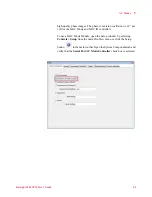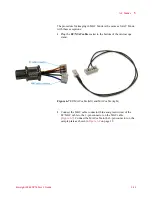
Contact Mode Imaging
5
Keysight 5500 SPM User’s Guide
5-9
a specific number of frames. To stop the scan, click the red STOP circle
that will replace the Up or Down arrow when you start a scan.
Constant Height Mode
In Constant Height Mode the system maintains the Z piezo at a constant
position as the tip is scanned across the sample and responds to height
differences. It is functionally the same as Constant Force Mode, except
that the feedback circuit gains are set very low so that the system does
not react to changes in tip deflection.
To image in Constant Height Mode, in the Servo window set the I and P
gains to 0.1 % or less. This will effectively cause the system to no
longer adjust the tip force. This lack of feedback reduces signal noise,
enabling atomic-level resolution imaging of very flat samples. The scan
speed can also be faster since the system will no longer attempt to react
to changes in deflection.
The error signal (in volts) is used to generate an image that is sensitive
to small changes in topography.
Fine-Tuning the Image
Besides the sharpness of the scanning tip, the quality of imaging in
Contact Mode is largely dependent on three factors: the Setpoint
voltage, feedback gains and scan settings.
Setpoint
When the Setpoint is too negative, the system will continue as if contact
is established between the tip and sample even if it actually is not. In
this case, the tip will not accurately trace surface topography—in the
extreme, the topography image will appear entirely flat. Making the
Setpoint more positive increases the force applied to the sample by the
tip. Higher force can place undue wear on the tip and, in the extreme,
can damage the tip or sample.
The optimal Setpoint value, which will vary per sample and per probe,
places enough force on the tip to accurately trace the topography
















































